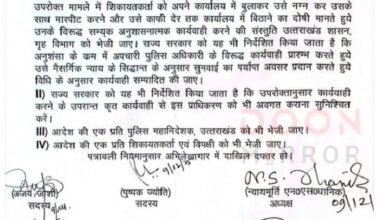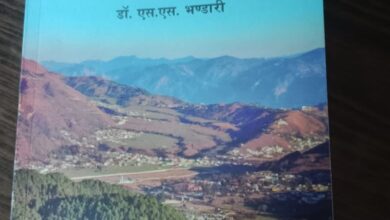Change in farming patterns needed due to change in weather required in Himalayas

Change in farming patterns needed due to change in weather required in Himalayas
B.D.Kasniyal
Pithoragarh, Feb 28
Though, belated, snowfall this year in Munsiyari, the main winter tourist spot of Pithoragarh district was not deficient but the old timers still recall heavy snowfall which used to take place till the eighties. “It happens often on alternate years these days,” said Puran Pandey, a hotelier in Munsiyari.
“We had an old saying in Munsiyari that the snowfall only stops in Munsiyari when it covers entire region down to Gori river from high Panchachuli peaks from one side and from Khalia peaks to Gori river bank from another side, but these sayings are not being met with due to change in the weather pattern in recent years,” said Pandey
Munsiyari that used to get snow from the month of November every year, now gets it in February sometimes.”This year scanty snowfall deprived us from the game of snow skiing and would lead to less water in natural sources,” said Pandey.
The recent changed trend of weather pattern in Himalayan region in recent years has started affecting traditional crop pattern as well.”We have witnessed 20 percent fall in production of traditional crops in Himalayan region from last some time due to changes in the timing of rains and snowfall, ” said Ritu Tamta, District Agricultural Officer, Pithoragarh.
I.A Khan, a retired Director of horticultural department has said that the fruit plants, that require high chilling could get affected due to less snowfall in hilly region resulting into weak fruit setting and reduced quality of fruits.” If an apple plant does not get required chilling in the months of December, January and February it leads to deposit of toxics in plant body that hinders overall growth of plants results into less production,” said the retired director.
Arjun Chand (45), a farmer of Gairsil sublet of village Sail in Pithoragarh district sais that weather pattern has changed his farming in the last 20 years rapidly.” Earlier, we on our 1.5 acres of land, our family used to get sufficient grains for a year for seven members of our family but from last two decades due to late and scanty rains ,while Rabi crops gets destroyed fully, the production of Kharif crops remains only 50 percent, ” lamented Arjun Chand.
The scientific community at GB Pant National Institute of Environment and Development at Katarmal Kosi, Almora, are well aware of changing weather pattern of Himalayan region.”We are selecting a group of scientists to take up the study of these changes in Himalayan weather pattern. We have noticed that sowing and harvesting times requires changes in the context of changing weather pattern in Himalayan region,” said Professor Sunil Nautiyal, Director of the institute.
“Changing weather pattern has affected all the regions of Himalayan region started from foothills up to 1000 meters and above, ” said Professor Nautiyal.
“The crop of ‘Cheena’ that used to grown by hill farmers immediately after harvesting wheat, and harvested in 75 days time has now gone as there is no gap for it during the sowing second crop following lack of rains in the hills ,” said Professor Nautiyal.
Taking cognizance of weather change pattern in Himalayan region, the GB Pant Institute has has initiated a process to study the structure and functioning of agro-ecosystems in the north-west Himalayas under changing climate so that farm-scale early warming system can be developed as decision support systems for sustainable farming. This research work will be done in collaboration with IIT Mumbai, National Center for Sustainable Coastal Management (NCSCM) Chennai and Tata Institute of Social Sciences (TISS) Mumbai.





